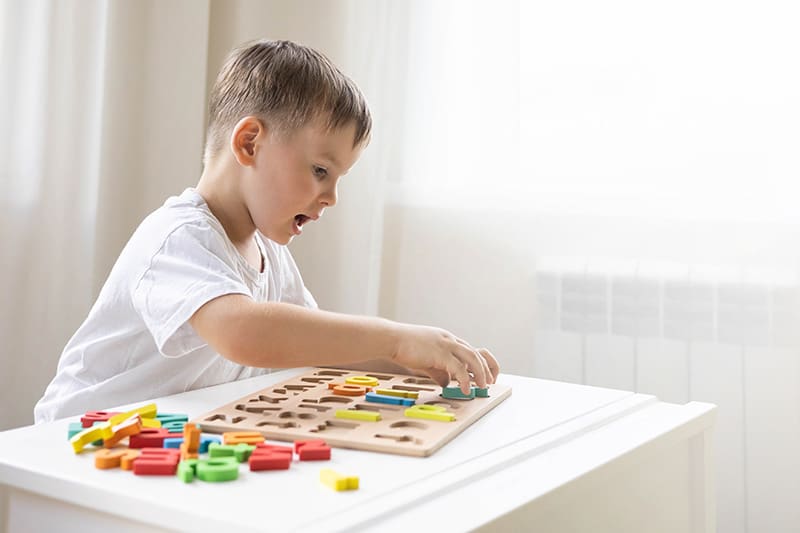The /m/ sound is a nasal sound, which means that all passage through the mouth is blocked and air instead has to travel through the nose. It is also a voiced (vs. unvoiced) sound, which requires the vibration of vocal cords. Closing your mouth and lips and using your voice to make a sound creates the /m/ sound. The lips are important for this bilabial sound. Try making the sound with your lips open – it becomes the /n/ sound instead.
The /m/ sound is among the earliest sounds your child will make. Many babies’ first word is “mama” and 2 year olds love announcing that things are “mine.” Your child should easily master this sound by at least 2 or 3 years old. If you notice a delay or absence in your little one’s ability to say /m/, it is best to contact a professional speech therapist immediately to help correct the delay and prevent future language development issues.
Speech-language therapists recommend many tricks to help your child practice the sounds they are developing. These tips also serve as away to gauge your child’s ability and to recognize a problem sooner rather than later. Try these techniques with your little one when practicing the /m/ sound:
- Verbal cues
/m/ is a fun sound to demonstrate for your child because it is so expressive. You can make the sound “mmmm” last for as long as you like and incorporate different volumes and tones. However, be sure the sound is still clear enough to be accurate. Once your child can make the sound herself, start to say it with vowels for her: “ma ma ma”, “moo moo moo”, “me me me.”
- Visual Cues
Use a mirror with your child so that he can see that his lips are fully closed to make the sound. Indicate your own closed lips, and encourage your child to do the same with his own lips. Pinching your index and thumb fingers together next to your mouth also helps illustrate a fully-closed mouth.
- Tactile Cues
Voiced sounds like /m/ vibrate the vocal cords, and it turn vibrate the throat. Let your child put his hand on your neck to feel these vibrations as you make the sound, and have him feel his own throat while he says /m/. As your child progresses and becomes more comfortable with the /m/ sound, there are many great resources for helping expand the sound into words, phrases and sentences. For example, the acclaimed blog Mommy Speech Therapy offers colorful worksheets developed by speech therapists that focus on the placement of the /m/ sound within words. [link: http://mommyspeechtherapy.com/?p=130]
- Awesome /m/ Activity
The /m/ sound can be musical! Pick a note within your vocal range and hold out the /m/ sound—“mmm.” Then encourage your kiddo to pick a higher note and do the same. Together you can create some pretty harmonies and practice the /m/ sound at the same time.












